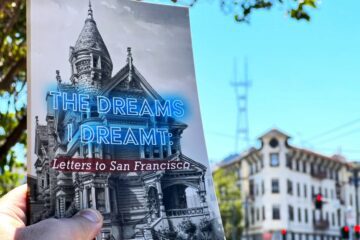How They Name Fires in CA, What CZU, SCU, LNU Lighting Complex Mean
Doznes of large wildfires in California have been burning since the dry lightning storm hit in mid August. The shear quantity of fires (560 in CA) caused some official fire naming conventions not typically seen in normal circumstances. Like the ‘CZU Lighting Complex’ fire in the Santa Cruz Mountains, or my personal favorite the ‘Hobo Fire’ in the Shasta Trinity National Forest.

For updates to all fire locations and containment go to https://www.fire.ca.gov/incidents/
Typically fires are given their names by the 911 dispatcher who takes the first emergency call about a fire, and the name reflex the location of the fire. A fire reported near ‘Main Street’ for example, would probably be named the ‘Main Fire’, as explained Cal Fire’s Daniel Berlant.
“All fires get a name. That allows the firefighters that are responding to them to quickly understand where they are going,” said Berlant in a recent video on social media. “It’s up to the dispatcher who is dispatching the fire to assign it a name.”
Cal Fire Representative explains fire names in a video:
Confused about fire names? Watch the video to learn how fire names are determined.
For captioned video: https://t.co/kdHT9ngrlj pic.twitter.com/e6PcGcufHx
— CAL FIRE (@CAL_FIRE) August 23, 2020
In the cases of the ‘CZU’, LNU and SCU Lighting Complex fires, the three letters at the beginning of the names indicates which Cal Fire unit is in charge of the response. The ‘CZU’ is for the San Mateo and Santa Cruz Unit while SCU stands for the Santa Clara Unit, which, despite its name, additionally includes Alameda and Contra Costa as well parts of other counties to the east. LNU complex is for the Sonoma Lake Napa Unit, which actually extends also into Solano and Yolo counties.
The ‘Lightning Complex’ portion, was assigned because hundreds of fires were started simultaneously due to dry lighting storms on August 16th & 17th. ‘Complex’ in the name means that firefighters are dealing with multiple fires simultaneously. But this is an extreme circumstance, rarely do so many fires begin simultaneously.
“While many of the fires get names, the sheer number of them require us to go to a numbering system,” Berlant said.
Within the LNU group, are the 15:10 and 13:4 fires. The first number corresponds to the battalion within the LNU unit that is responding to the fire. The second number indicates “the sequential order in which it occurs,’ Berlant said. In other words, 13:4 means that Battalion 13 in the LNU Unit is responding to its fourth fire.

Most Fires are named by their location. For example if someone calls into 911 and says “I’m at Tommy’s Joint and there’s a fire!”, the dispatcher has to make a decision on how to name that fire so they can refer to it with firefighters, they could go with ‘Tommy’s fire’ or perhaps the name of the road the restaurant is on, or perhaps ‘the more dubious ‘Joint Fire’, it’s up to them. Now you may be wondering how the ‘Hobo Fire’ in Shasta got named? It’s not because someone from the 1920’s saw some ‘hobos causing trouble down by the river’. There’s actually a place called Hobo Gultch in Shasta, and that location most likely the cause of the fire’s name.
The August lightning strikes that ignited 560 fires across California led Cal Fire to use some of its other naming guidelines to handle so many fires at once. For fire info, locations, and containment visit the Cal Fire site here.








